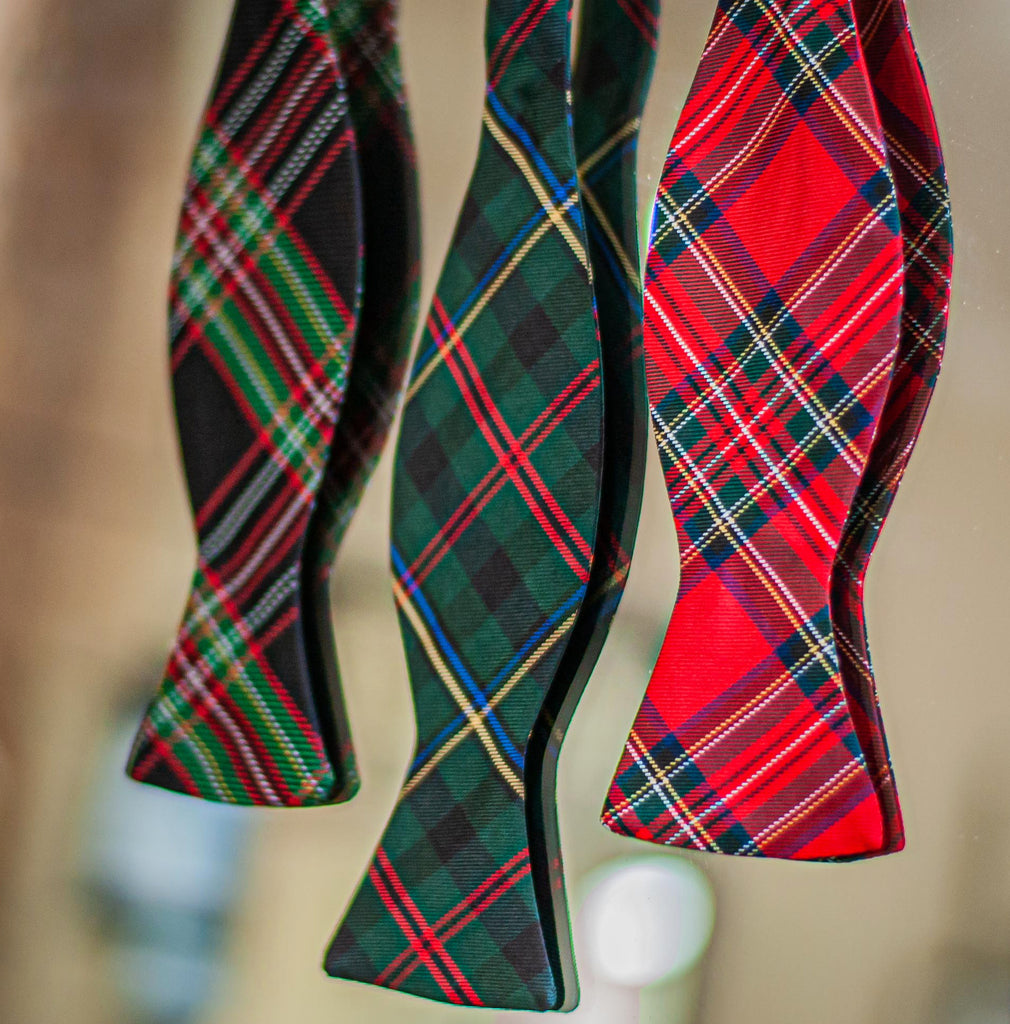The History of Tartan

There’s something wonderfully festive and distinguished about tartan. It’s handsome and strong, steeped in history and tradition, and - for many - it’s even familial and symbolic. Donning your tartan of choice can make you stand a bit taller and socialize a bit longer as new memories settle in beside your nostalgia.
Before we explore the history of tartan, though ... what is tartan, exactly? How does it differ from plaid? Does “tartan plaid” exist? And what’s the difference between Scottish tartan, Irish tartan and Madras? These are common questions, and we are delighted to share our answers:
Tartan vs. Plaid
Tartan is a pattern that features alternating stripes of varying widths and colors that combine vertically and horizontally on a solid background. A tartan can feature as few as two colors, to upwards of nine. Each unique pattern is called a sett.
In the US, we typically (and erroneously) refer to tartan as plaid or even tartan plaid. So commonplace are these misnomers, that even on the R. Hanauer website we present our collection of tartans as plaids.
It’s easy to see how these words became interchangeable in the American vernacular. Derived from the Scottish Gaelic word meaning blanket, a plaid is worn around a gentleman’s waist and over his left shoulder to keep him warm when in traditional Highland dress.

Tartan’s Colorful History
The history of tartan is long-standing and complicated.
Though its roots date back to 3rd and 4th Century Scotland, tartan became popular among Northern Scots - the Highlanders - in the 17th Century. So definitive was it, in fact, that in the mid-1700s, the use of tartan was banned in an attempt to assimilate the Highlands and suspend the Clan system. When the ban was lifted nearly 40 years later, tartan was widely adopted as a symbol of Scottish pride.
Up until the mid-19th Century, tartans represented regions or districts within Scotland, as opposed to being associated with specific clans. Our modern-day understanding that tartans depict lineage was established in 1822 when King George IV invited clan leaders to attend his birthday celebration in Edinburgh wearing their hereditary tartans. No such thing existed, and so the notion was formalized and setts were either renamed or newly created to suit the clans.
Scottish Tartan, Irish Tartan & Madras Tartan
This is where Scottish tartans and Irish tartans part ways however. Whereas Scottish tartans are typically tied to family names (more than 25,000 Scottish tartans are registered today), Irish tartans are still associated with the districts and counties of Ireland.
Madras is also a tartan. Worn by Scottish Highland Regiments serving abroad, tartan caught the eye of Indian textile makers in the city of Madras (now called Chennai). Their interpretation of the pattern, with its vibrant colors and exciting designs, soon made its way toward the West, where it continues to be popular.
The Tartans of R. Hanauer
At R. Hanauer, we are proud to carry numerous rich and sophisticated tartans, many of which are particularly popular during the Fall and Winter months.
Our Malcom Tartan Necktie in deep evergreen and rich red is wonderfully warm and comforting. Handmade from the finest silk, the Malcolm tartan is perfect for daytime and evening events all season long. This lovely - dare we say - plaid, is also available in a Bow Tie and Cummerbund Set.
Holiday-ready, our silk Prince of Wales Bow Tie is woven in England and handmade by R. Hanauer in the USA. This bold and festive tartan is a must-have addition to your cool-weather wardrobe that should stay close-at-hand through Valentine’s Day. Available also in a Necktie and Cummerbund Set.
Black Watch tartan is among the most popular worldwide - perhaps because it’s known as the tartan for those who have no familial ties to Scotland or Ireland. Handmade from gorgeous silk woven in England, this centuries old sett is available as a Bow Tie, Necktie and Cummerbund Set.
Ahhh, Carolina Tartan. So classic, so elegant ... so distinctly Carolina. Adopted as the official tartan in North Carolina in 1991 and in South Carolina in 2002, this sett has a special place in our hearts. This wool tartan is one of our most popular, and made right here in Sweet Caroline.
Our Holiday Tartan is the well-dressed gentleman’s ultimate black-tie staple for this most wonderful time of the year. Timeless and distinguished, our silk Holiday Tartan Necktie is always in high demand. Should you shop for your holiday fine accessories at a time when these gems are sold out, join our waiting list and we’ll notify you as soon as they are back in stock.
Our handsome Fox & Horn print is available on this beautiful tartan background. Handmade in our Fort Mill workshop, this silk makes for stunning neck ties as well - check out our other collections for these and other statement pieces.
No ode to tartan is complete without a nod to happy-go-lucky madras. Silk and cotton come together in this gorgeous Madras Cummerbund Set that’s handmade in the USA. The bow tie worn alone is perfect for events on picturesque Fall days; worn together and this sett will carry you through to that Spring wedding that just hit your social calendar. Cheers!
----
Whether we’ve helped you find your favorite tartan or you’re adding to your collection with some #RHanauer classics, tag us! And if you’re not already, follow us on Instagram, Facebook and YouTube. We use social media to showcase new products, share inspirational looks, and provide essential how-tos from which every well-dressed gentleman can benefit.







